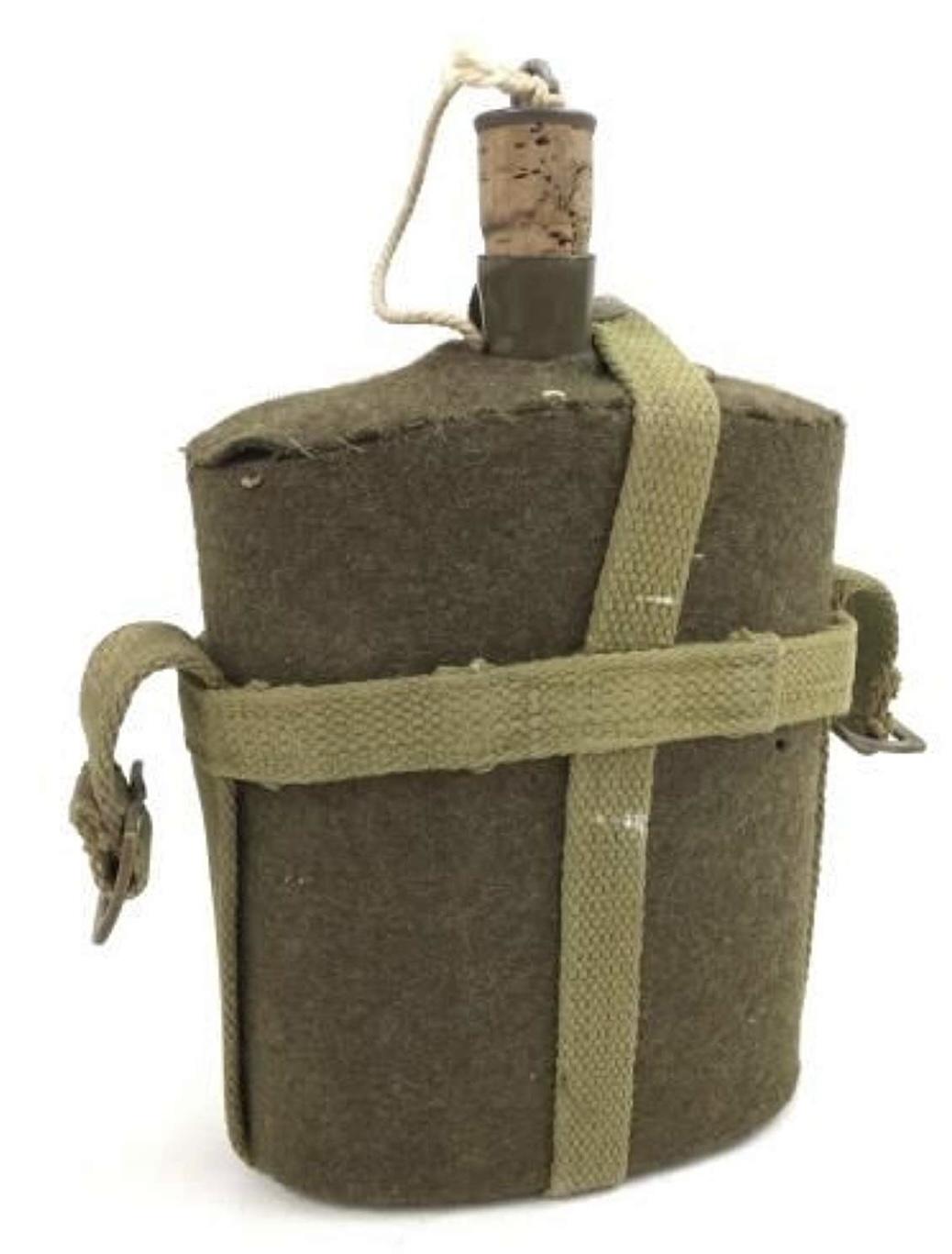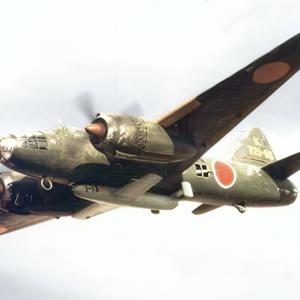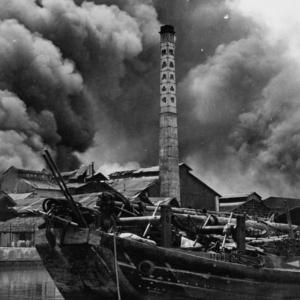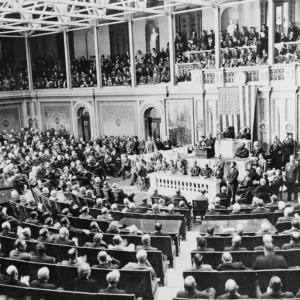
WW2 British Army water bottle
The British Army's Mark VII water bottle, introduced in 1939, became a standard and familiar part of the British soldier’s kit throughout the Second World War. Designed to accompany the 1937 Pattern Web Equipment, it was a practical improvement on earlier models like the Mark V and VI, building on lessons from the First World War. The Mark VII featured a durable steel body coated with green enamel for the Army, while RAF-issued versions were often finished in cobalt blue. A thick felt cover, typically khaki or green, was fitted over the bottle to reduce clanking noise and offer limited insulation from temperature extremes. At the top, a cork stopper was secured by a short length of cord attached to a small wire loop welded to the bottle’s neck, preventing loss during use.
Early in the war, the bottle was carried in a lightweight skeleton-style webbing harness. This evolved into a more secure bucket-style webbing carrier by 1940, which better protected the bottle and allowed for easier integration into the soldier’s webbing system. These carriers were constructed from strong woven cotton webbing and included hooks or straps that attached to the wearer’s belt or haversack. Both the bottle and its carrier were commonly marked with the year of manufacture, the manufacturer’s initials, and the British War Department’s broad arrow stamp to signify government property.
Production of the Mark VII was undertaken by numerous manufacturers across the UK and Commonwealth. Enamel works in Britain handled large-scale manufacturing, while factories in colonial India—such as the Bengal Enamel Works and Madras Enamel Works—also produced bottles to British specifications. Similarly, the webbing carriers and felt covers were manufactured by established firms like Mills Equipment Company and Martin Wright & Sons. Despite the wide array of manufacturers, quality and design were kept consistent by standard military specifications.
The bottle had a capacity of two pints, or roughly 1.14 liters, and measured about 190 millimeters in height and 140 millimeters in width. Though simple in appearance, the combination of enamelled steel, a cork stopper, and a felt jacket made the bottle both tough and functional under battlefield conditions. Its compact size allowed it to be easily carried, and the felt cover proved especially helpful in reducing noise during movement, which was vital during stealth operations or night patrols.
From its introduction in 1939 until the end of the war in 1945, millions of these bottles were manufactured and distributed across every major theatre of war in which British and Commonwealth forces served—from the deserts of North Africa to the jungles of Burma. The Mark VII remained in service after the war, with many still in use during the late 1940s and 1950s. Commonwealth countries continued producing similar designs well into the 1970s, especially in India, where production persisted for decades.
For soldiers in the field, the water bottle was not just a piece of standard equipment—it was an essential item for survival. Whether marching through the heat of the Middle East or enduring the cold rains of Europe, every British soldier carried this bottle as part of his webbing. Its rugged design and universal use made it a quiet, dependable companion to the millions who served during the war.
Today, surviving examples of the Mark VII water bottle are prized by collectors and military historians. The bottles can still be identified by their stamped markings, the texture of their wool covers, and even the subtle differences between manufacturers. Though a humble object, the Mark VII water bottle remains a testament to the practical design and thoughtful engineering that defined British military equipment during the Second World War.










